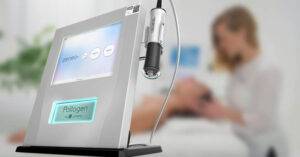
Best Oxygeneo Machine in the UAE: GeneO+ 3 in 1 Facial Device
In today’s competitive aesthetic market, dermatology clinics and skincare centers across the UAE need more than just skilled professionals; they
More Posts

In today’s competitive aesthetic market, dermatology clinics and skincare centers across the UAE need more than just skilled professionals; they

In a busy dermatology clinic, the right chair can make all the difference in efficiency, comfort, and treatment outcomes. Yet
Send Us A Message
Are you looking to enhance precision and efficiency in your dental practice? High-speed dental handpieces are essential tools in modern dentistry, providing exceptional speed and accuracy that significantly reduce treatment time and patient discomfort. Ready to revolutionize your dental practice? Discover premium high-speed dental handpieces at SkyLine MED in Dubai.
Shop the best dental equipment and transform your workflow—explore the article below and discover the true potential of high-speed dental handpieces.
High-speed dental hand tools, commonly known as dental drills, are sophisticated precision instruments powered by an integrated motor, which allows them to function as a fully self-contained system.
These tools are meticulously engineered to facilitate the efficient removal of tooth structure while sculpting crowns and fillings with unparalleled accuracy.
Additionally, they are designed to seamlessly integrate with compatible dental unit hoses or tubing, ensuring flawless operation and enhanced performance during various dental treatments.
With the capability to achieve high-speed dental handpiece rpm ranging from 200,000 to 400,000, these instruments deliver swift and effective results, particularly in procedures requiring substantial cutting efficiency and precision.
High-speed dental handpieces are advanced instruments essential to modern dental procedures. Their construction encompasses several vital components, each playing a crucial role in their functionality and performance:
Understanding these components is necessary for dentists to ensure the effective use and maintenance of high -speed handles, thereby enhancing patient care and procedural outcomes.
“Upgrade your clinic with cutting-edge high-speed dental handpieces. Visit SkyLine in Dubai today for top-tier solutions tailored to your needs. Click here to explore our products.”
High speed dental handpieces offer a range of applications that amplify precision and operational efficiency, some common applications include:
These applications highlight the versatility and importance of high speed dental handpieces in delivering high quality dental care.
With its subtly curved design, the handpiece is crafted to accommodate a variety of dental drills. At the heart of its function is an air-driven mechanism, where pressure from the integrated turbine powers the rotary motion of the bur, making it perfect for both cutting and polishing. This precise motion is activated effortlessly when the dentist presses a foot pedal.
Inside the handpiece, lubricated ball bearings securely grip the friction-fit bur, ensuring smooth and efficient rotation with minimal friction. This design guarantees a high level of precision during procedures.
Additionally, the handpiece head features two small openings that release a controlled mixture of air and water spray. The cooling water effectively prevents overheating, safeguarding the tooth and enhancing the comfort and safety of the patient throughout the procedure.
read also about: high-speed vs low-speed dental handpieces
In the world of high speed dental handpieces, several manufacturers have distinguished themselves through innovation, quality and performance. Here are some of the leading brands recognized for their exceptional contributions to the Best Dental Handpieces in Dubai:
NSK is a renowned Japanese company celebrated for its state-of-the-art electric handpieces. The company combines ergonomic designs with unparalleled torque power, catering to the precise needs of dental professionals. The flagship Ti-Max Z95L model features a powerful 26W motor and 45% reduction in noise compared to previous models, making it a favorite among dentists who prioritize precision, comfort and reliability.
KaVo, or KaVo Kerr, is a German brand that has been a staple in the dental industry for decades. Known for its high-speed, air-driven handpieces, KaVo emphasizes durability and performance. For example, the MASTERtorque Lux M8900 L operates at 23 watts, providing 20% more power than previous generations. It features Direct Stop technology, allowing the handpiece to stop a drill within one second, enhancing efficiency during treatments.
DentalEZ offers high-speed, air turbine handpieces that center around torque control, delivering an industry-leading power of 27 watts for excellent cutting ability. Its air control maximizes turbine performance, and its washer design helps prevent debris from spreading. This handpiece optimizes the direction of its water-cooling spray to flush the operating system and keep the operation site clean and operable.
Bien-Air is a Swiss company known for their precision engineering and high-quality dental instruments. Their high-speed handpieces are designed for optimal performance, offering features such as reduced noise levels and enhanced ergonomics to improve the user experience.
When choosing a high-speed dental handpiece, it is important to consider factors such as power, ergonomics, noise level, and the specific requirements of your practice. Each of these brands offers unique advantages, so evaluating their features in line with your clinical needs will help ensure optimal results.
“Looking for trusted brands and exceptional performance? SkyLine offers the finest selection of high-speed dental handpieces in Dubai. Find out more now!”
read more about: How to Properly Sterilize a High-Speed Dental Handpiece?
High-speed dental handpieces offer several advantages, including precision, reduced treatment time, enhanced patient comfort, versatility, and improved accuracy. However, they also have some drawbacks: heat generation, higher cost, noise, increased vibration, and the potential for overuse. Let’s take a closer look at each to understand how they can best serve your practice:
“Maximize efficiency and minimize challenges with SkyLine’s high-performance dental handpieces. Order yours now and experience the difference”
Given the significant investment in high speed handpieces in dentistry, it is crucial to prioritize their maintenance in order to extend their lifespan and maintain peak performance. A robust and consistent maintenance routine is key to ensuring these essential tools function reliably over time.
While dental handpieces maintenance instructions are straightforward, they require careful attention and regular effort. don’t need specialized expertise, but you must be diligent in following proper procedures to avoid costly repairs and extend the service life of your handpiece.
While there are many aspects to consider in maintaining high speed handpieces, several basic practices apply universally:
By adhering to these basic maintenance practices, you can ensure that your high-speed dental handpiece continues to deliver the high performance and reliability your practice depends on.
In conclusion, high-speed dental handpieces are indispensable tools that elevate the precision, speed, and efficiency of modern dental procedures. With their advanced design and exceptional capabilities, they enhance patient comfort and enable practitioners to perform complex tasks with ease and accuracy. However, like any specialized equipment, these tools require regular maintenance to ensure consistent performance over time. At SkyLine, we understand the critical role that high-quality dental handpieces play in your practice. “Don’t wait! Explore our top-tier selection of high-speed dental handpieces now and take your practice to the next level of excellence.”